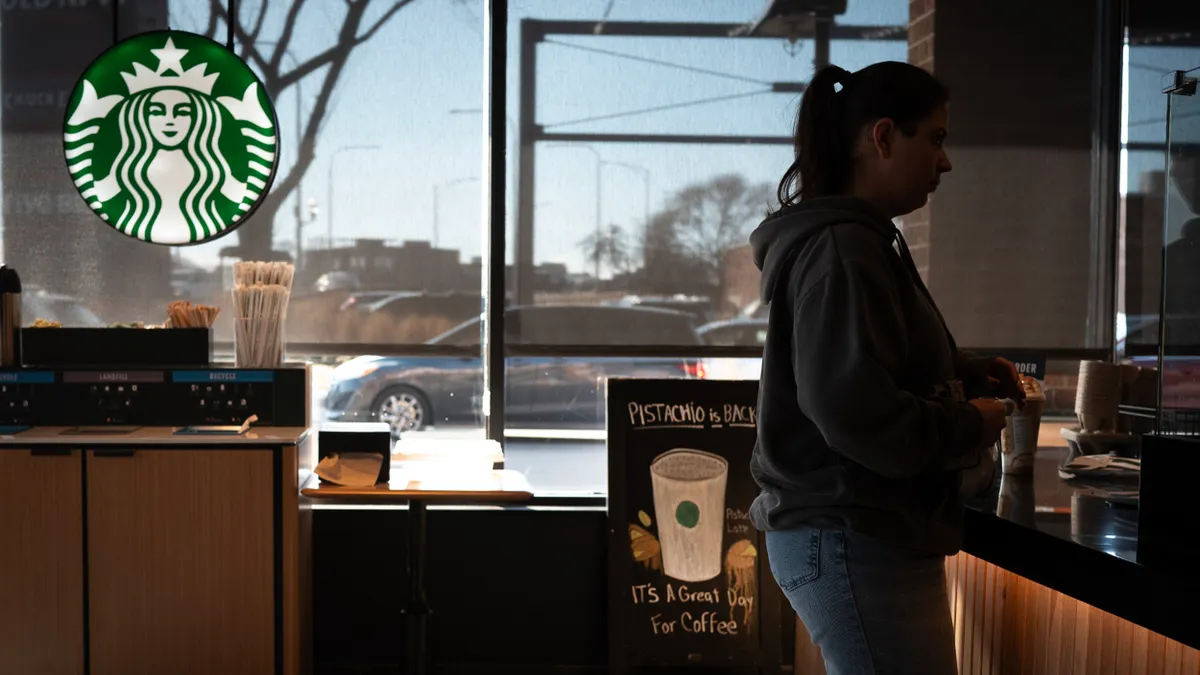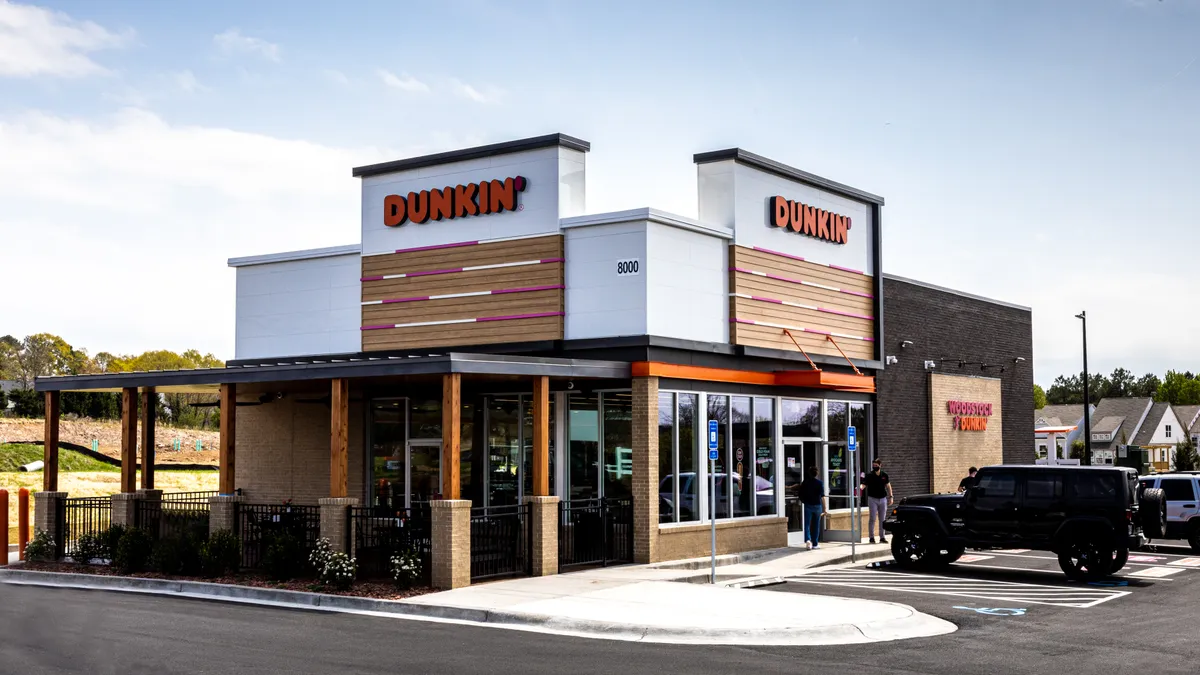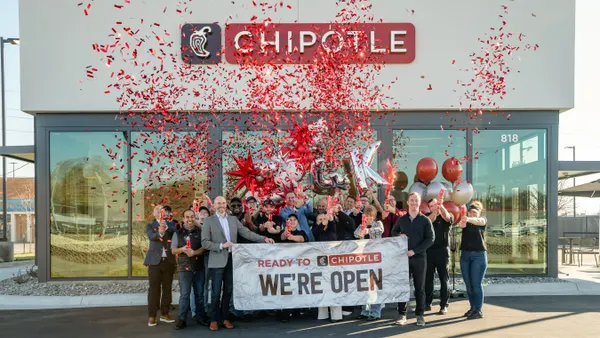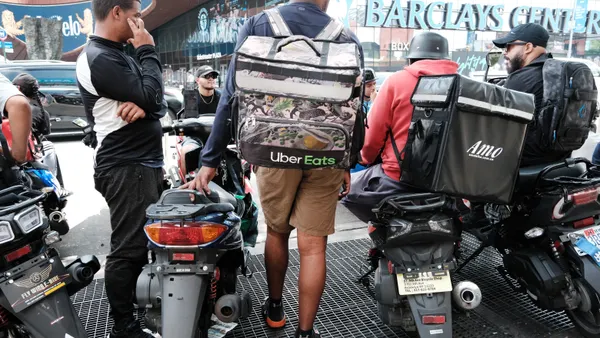Dive Brief:
- Starbucks is piloting a virtual assistant called Green Dot Assist in 35 stores to help its baristas in real time, Chief Technology Officer and Executive Vice President Deb Hall Lefevre wrote in a company post Tuesday.
- In addition to AI, the chain is working on a next-generation point-of-sales system that can improve order accuracy, workflow and uptime, according to an announcement about the chain’s three-day leadership experience conference.
- The virtual assistant and POS are part of the chain’s ongoing strategy, called Back to Starbucks, to streamline operations, reduce friction and give employees more time to create beverages and better serve customers, Lefevre said.
Dive Insight:
Green Dot Assist is the latest move by Starbucks as the coffee chain explores a variety of technologies to improve operational efficiency.
Starbucks’ virtual assistant can help roles ranging from hourly employees to managers in various tasks, according to a video on the technology. Employees can ask questions of the AI assistant using in-store iPads and instantly receive a conversational response. For example, it can help staff check ingredients for a drink, help new employees learn beverage formulations, help troubleshoot equipment and assist managers in finding employees due to last-minute callouts.
Starbucks expects to roll out Green Dot Assist, which is powered by Microsoft Azure’s OpenAI platform, across the U.S. and Canada during the company’s fiscal 2026, which begins in the fall, according to CNBC
Starbucks is also looking at other technologies to simplify operations, like a mobile-order sequence algorithm to improve the flow of pickup orders and other technology to speed up drink ordering processes. Ideally, the chain wants to fulfill in-person orders within four minutes and mobile orders in 12 to 15 minutes.
Technology that can ultimately improve the customer experience could help boost the chain’s same-store sales and traffic, which have been sluggish for five consecutive quarters. Brian Niccol was brought on as CEO last September to turn around the brand. Since then, he’s made adjustments like bringing back a coffee condiment bar, reversing its open-door policy, cutting less popular drinks from the menu, restructuring its corporate office and bringing on new C-suite leadership. Under his leadership, the chain revived the chief operating officer position that was cut in 2022.












